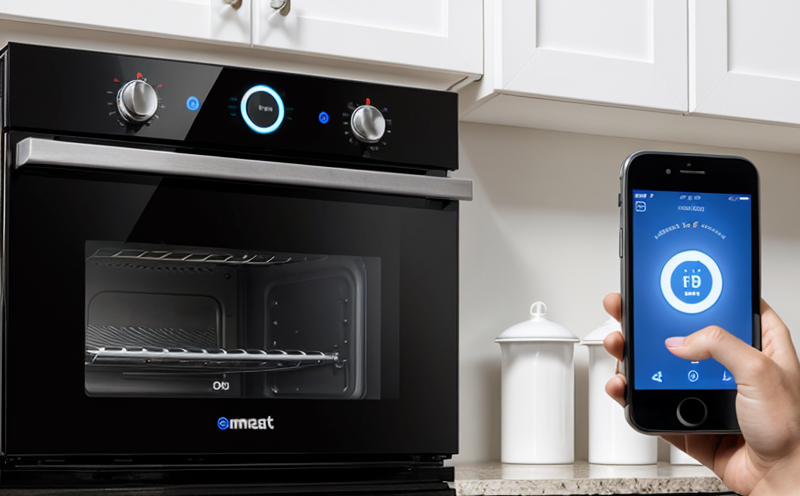IEC 60335-2-40 Safety Testing of Smart Air Conditioners
The IEC (International Electrotechnical Commission) Standard 60335-2-40 is a comprehensive set of safety requirements specifically designed for household appliances and similar apparatus. This standard ensures that smart air conditioners meet stringent safety criteria to protect users from potential hazards, such as electric shock, fire risk, and other electrical malfunctions.
Smart air conditioners are part of the broader category of consumer electronics and home automation systems. These devices integrate advanced technology with traditional cooling functions, offering enhanced energy efficiency, comfort control, and remote monitoring capabilities. The testing under IEC 60335-2-40 ensures that these sophisticated appliances operate reliably and safely in domestic environments.
The standard covers a wide range of safety assessments, including:
- Electrical insulation
- Protection against electric shock
- Overload protection
- Temperature stability
- Mechanical strength
- Flammability testing
- Structural integrity during normal operation and stress conditions
The IEC 60335-2-40 testing process involves a series of rigorous procedures to evaluate the safety aspects of smart air conditioners. These tests are conducted using state-of-the-art equipment tailored to simulate real-world scenarios where potential hazards could occur.
During the test, specimens undergo various stress conditions including high and low temperatures, vibration, humidity exposure, and power fluctuations. The results provide a comprehensive assessment of the appliance's durability and safety under typical use conditions. Compliance with these standards ensures that smart air conditioners are safe for consumers and meet regulatory requirements in multiple markets.
The testing process also includes:
- Initial inspection to confirm compliance with product specifications
- Electrical tests, including insulation resistance measurement and dielectric strength test
- Mechanical durability tests, such as vibration and shock resistance checks
- Thermal stability and overheat protection evaluation
- Flammability testing using relevant international standards like UL 94 or IEC/EN standards
- Testing for emissions from the cooling system to ensure environmental safety
The comprehensive nature of this standard ensures that smart air conditioners are not only functional but also safe for domestic use. Compliance with these stringent requirements is essential for manufacturers aiming to enter international markets and comply with local regulations.
Given the complexity of smart appliances, it's crucial for manufacturers to work closely with accredited laboratories like ours to ensure thorough testing and compliance. Our team of experts can guide you through the entire process, from initial consultation to final report generation.
Why It Matters
The safety requirements outlined in IEC 60335-2-40 are critical for protecting users against potential hazards associated with smart air conditioners. By ensuring compliance with these standards, manufacturers can:
- Avoid product recalls and associated costs
- Meet regulatory requirements in multiple markets
- Enhance consumer trust through proven safety measures
- Ensure consistent quality across different production batches
- Reduce the risk of liability claims due to product malfunctions
- Promote brand reputation by demonstrating a commitment to safety and quality
Non-compliance can lead to severe consequences, including:
- Lawsuits from injured consumers
- Fines imposed by regulatory bodies
- Loss of market share due to negative publicity
- Increased insurance premiums and operational costs
In summary, adhering to the safety requirements specified in IEC 60335-2-40 is not just a legal requirement but also a business imperative. It helps manufacturers protect their brand reputation, ensure consumer safety, and comply with international standards.
Why Choose This Test
The IEC 60335-2-40 testing of smart air conditioners offers several advantages for manufacturers:
- Comprehensive Safety Evaluation: The test evaluates multiple safety aspects, ensuring that the appliance is safe under various conditions.
- International Recognition: Compliance with this standard is recognized worldwide, facilitating market entry and export.
- Regulatory Compliance: It ensures adherence to international regulations, avoiding potential legal issues.
- Risk Management: By identifying potential safety hazards early in the development process, manufacturers can mitigate risks effectively.
- Enhanced Consumer Trust: Demonstrating compliance with rigorous safety standards builds trust and confidence among consumers.
- Competitive Edge: Meeting these stringent requirements sets a benchmark for quality and reliability, giving manufacturers an edge in the competitive market.
The test is essential for manufacturers looking to ensure their products meet the highest safety standards. It provides peace of mind that the appliance is safe for domestic use and can be trusted by consumers globally.
Use Cases and Application Examples
The IEC 60335-2-40 testing is particularly relevant for smart air conditioners used in various settings:
- Residential Homes: Ensuring safety in domestic environments where family members, including children and elderly individuals, are present.
- Offices and Commercial Spaces: Providing a safe work environment with reliable cooling systems.
- Hotels and Resorts: Offering comfort and peace of mind to guests staying in well-maintained accommodation facilities.
- Apartments and Condominiums: Ensuring safety for residents living in shared spaces where multiple units are interconnected.
In addition, smart air conditioners can be integrated into larger home automation systems. The IEC 60335-2-40 testing ensures that these appliances operate safely within such complex networks:
- Integration with Smart Home Systems: Ensuring compatibility and safe operation when connected to other smart devices.
- Remote Monitoring and Control: Providing a secure environment for remote management of cooling systems, ensuring safety even when not physically present.
These use cases highlight the importance of rigorous safety testing in enhancing user trust and satisfaction. By adhering to IEC 60335-2-40 standards, manufacturers can ensure their products are safe for a wide range of applications.





